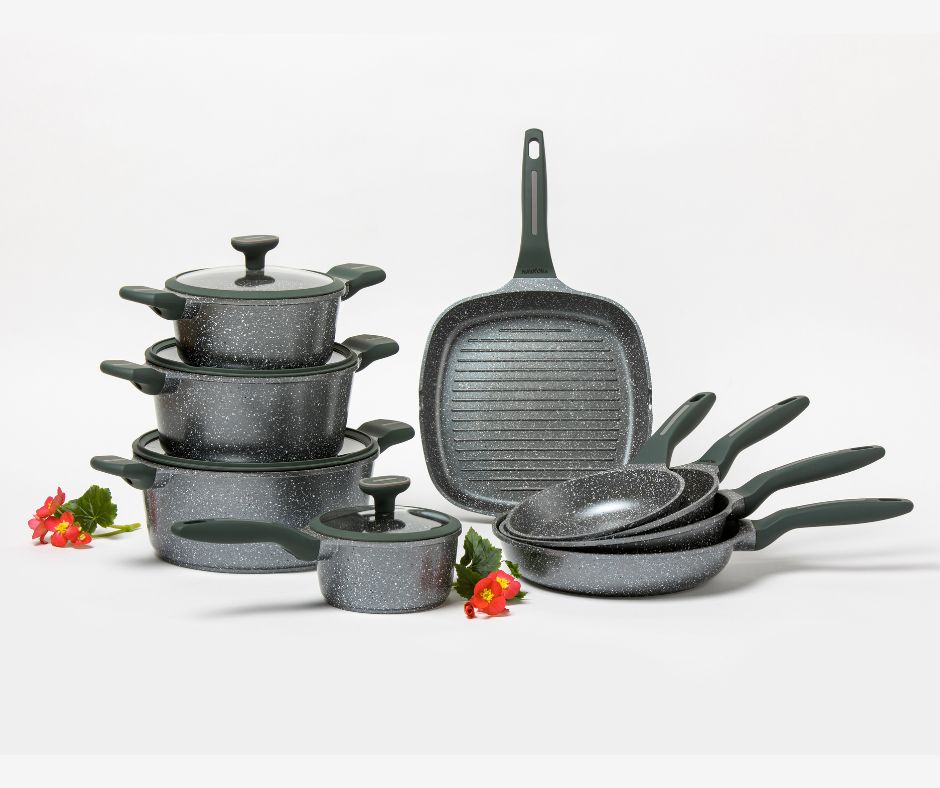Info

Non-stick cookware refers to cooking utensils that feature a special coating designed to prevent food from sticking to the surface during cooking. These items are highly popular due to their convenience in cooking and cleaning.
How do non-stick cookware work?
The surface of non-stick cookware is coated with a special layer, commonly made of Teflon (PTFE) or other materials such as ceramic coatings. This layer has an extremely smooth texture, reducing friction between the food and the surface, which prevents sticking.
Advantages of non-stick cookware
1. Easy Cooking: Requires less oil or butter for cooking.. .
2. Effortless Cleaning: Food doesn’t stick, making cleanup quick and simple.
3. Ideal for Delicate Foods: Perfect for frying eggs, pancakes, or fish.
4. Lightweight Construction: Typically lightweight, making them easy to handle.
Disadvantages of Non-Stick Cookware
1. Sensitivity to High Temperatures: Teflon coatings can degrade at temperatures above 250°C (482°F), potentially releasing toxic substances.
2. Limited Durability: The non-stick coating can wear off over time, especially when using metal utensils.
3. Shorter Lifespan: Generally, they don’t last as long as stainless steel or cast iron cookware.
Types of Non-Stick Coatings
1. Teflon (PTFE): The most common coating, offering excellent non-stick performance.
2. Ceramic Coatings: Non-toxic, eco-friendly, and resistant to higher temperatures, though they tend to wear out faster.
3. Anodized Aluminum: Features a durable non-stick layer with excellent heat distribution.
Tips for Care and Maintenance
Non-stick cookware by NAVA is an excellent choice for those seeking quick, healthy, and hassle-free cooking. However, proper care is essential to maintain their effectiveness and ensure long-term use.
Dal lunedì al venerdì dalle 08:00 alle 16:00
Iscriviti per ricevere le nostre ultime novità, offerte e molto altro

© Copyright 2025 -NAVA. Tutti i diritti sono riservati.

